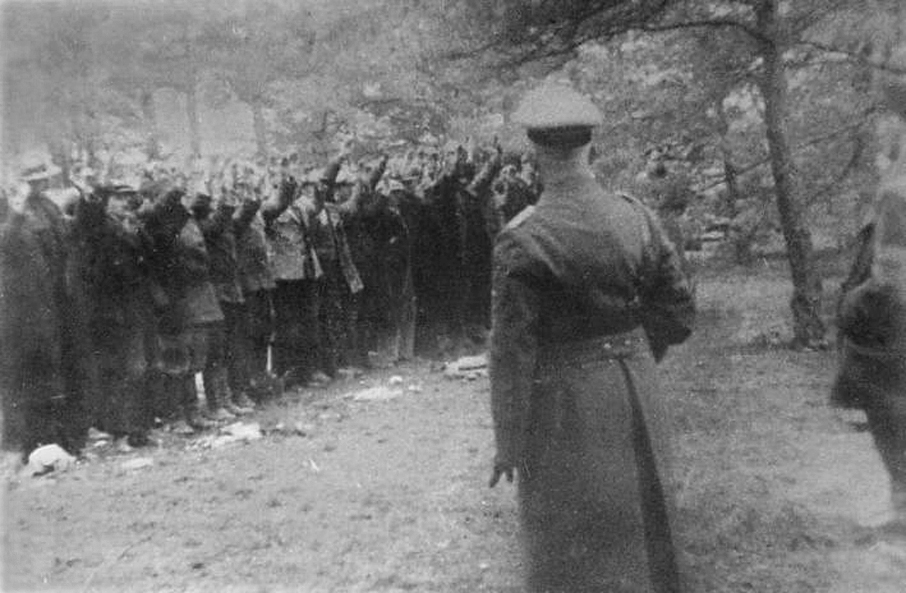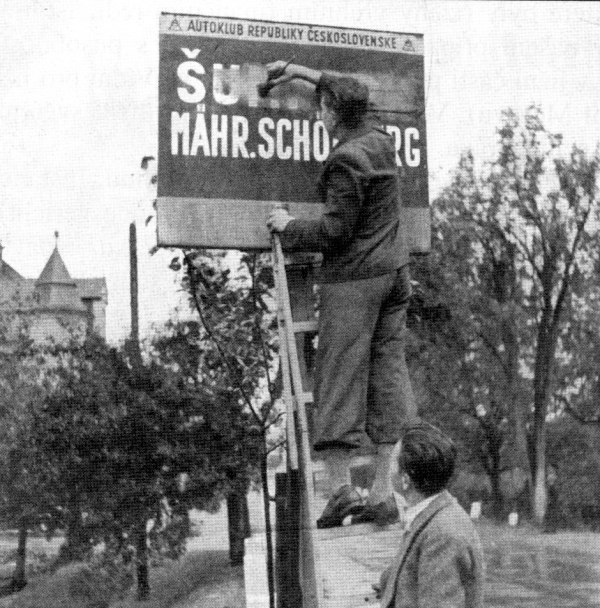Το ναζιστικό γενικό σχέδιο εξολόθρευσης των Λαών της ανατολικής Ευρώπης μέχρι τα Ουράλια και για γερμανικό αποικισμό της ανατολικής Ευρώπης
The Generalplan Ost (German pronunciation: [ɡenəˈʁaːlˌplaːn ˈɔst]; English: Master Plan for the East), abbreviated as GPO, was the Nazi German government's plan for the genocide and ethnic cleansing on a vast scale, and colonization of Central and Eastern Europe. It was to be undertaken in territories occupied by Germany during World War II. The plan was partially realized during the war, resulting directly and indirectly in the deaths of around 9.4 to 11.4 million ethnic Slavs by starvation, disease, ethnic cleansing, mass murder, or extermination through labor, including about 4.5 million Soviet citizens,[1] 2.8 to 3.3 million Soviet POWs,[2]1.8 to 3 million Poles,[3][4][5] 300 to 600 thousand Serbs[6][7] and 20 to 25 thousand Slovenes.[8] Its full implementation, however, was not considered practicable during the major military operations, and was prevented by Germany's defeat.[9][10]
The plan entailed the enslavement, forced displacement, and mass murder of most Slavic peoples (and substantial parts of the Baltic peoples, especially Lithuanians and Latgalians[11]) in Europe along with planned destruction of their nations, whom the Nazis viewed as racially inferior in accordance to their racial theories.[12] The program operational guidelines were based on the policy of Lebensraum designed by Adolf Hitler and the Nazi Party in fulfilment of the Drang nach Osten (drive to the East) ideology of German expansionism. As such, it was intended to be a part of the New Order in Europe.[13]
The master plan was a work in progress. There are four known versions of it, developed as time went on. After the invasion of Poland, the original blueprint for Generalplan Ost (GPO) was discussed by the RKFDV in mid-1940 during the Nazi–Soviet population transfers. The second known version of GPO was procured by the RSHA from Erhard Wetzel in April 1942. The third version was officially dated June 1942. The final settlement master plan for the East came in from the RKFDV on October 29, 1942. However, after the German defeat at Stalingrad planning of the colonization in the East was suspended, and the program was gradually abandoned.
| Ethnic group / Nationality | Population percent subject to removal |
|---|---|
| Russians[26][25] | 50–60% to be physically eliminated and another 15% to be sent to Western Siberia |
| Estonians[11][27] | almost 50% |
| Latvians[11] | 50% |
| Czechs[25] | 50% |
| Ukrainians[25] | 65% |
| Belarusians[25] | 75% |
| Poles[25] | 20 million, or 80–85% |
| Lithuanians[11] | 85% |
| Latgalians[11] | 100% |
|
Ostsiedlung (German pronunciation: [ˈɔstˌziːdlʊŋ], literally east settling), in English called the German eastward expansion, was the medieval eastward migration and settlement of Germanic-speaking peoples from the Holy Roman Empire, especially its southern and western portions, into less-populated regions of Central Europe, parts of west Eastern Europe, and the Baltics. The affected area roughly stretched from Estonia in the north all the way to Slovenia in the south and extended into Transylvania, modern-day Romania in the east. In part, Ostsiedlung followed the territorial expansion of the Empire and the Teutonic Order.
According to Jedlicki (1950), in many cases the term "German colonization" does not refer to an actual migration of Germans, but rather to the internal migration of native populations (Poles, Hungarians, etc.) from the countryside to the cities, which then adopted laws modeled on those of the German towns of Magdeburg and Lübeck.
Before and during the time of German settlement, late medieval Central and Eastern European societies underwent deep cultural changes in demography, religion, law and administration, agriculture, settlement numbers and structures. Thus Ostsiedlung is part of a process termed Ostkolonisation ("east colonization") or Hochmittelalterlicher Landesausbau ("high medieval land consolidation"), although these terms are sometimes used synonymously.
Ethnic conflicts erupted between the newly arrived settlers and local populations and expulsions of native populations are also known.[1] In several areas subject to the Ostsiedlung, the existing population was later discriminated against and pushed away from administration.[2][3]
In the 20th century, the Ostsiedlung was heavily exploited by German nationalists, including the Nazis, to press the territorial claims of Germany and to demonstrate supposed German superiority over non-Germanic peoples, whose cultural, urban and scientific achievements in that era were undermined, rejected, or presented as German.
Drang nach Osten
Drang nach Osten (German: [ˈdʁaŋ nax ˈʔɔstn̩], "Drive to the East",[1] "push eastward",[2] "drive toward the East"[3] or "desire to push East"[4]) was a term coined in the 19th century to designate German expansion into Slavic lands.[3] The term became a motto of the German nationalist movement in the late 19th century.[5] In some historical discourse, Drang nach Osten combines historical German settlement in Central and Eastern Europe, medieval (12th-13th-century)[6] military expeditions like those of the Teutonic Knights (see Northern Crusades), and Germanisation policies and warfare of modern German states such as those reflecting the Nazi Lebensraum concept.[2][7]
In Poland the term Drang nach Osten was used in describing programs of Germanizing Poland,[1] while in Germany the slogan was part of a wider nationalist approbation of medieval German settlement in the east and of the idea of the "superiority of German culture".[1] The slogan Drang nach Westen ("Drive to the West"), derived from Drang nach Osten, was used to depict an alleged Polish drive westward.[1][8]
The concept of Drang nach Osten was a core element of German nationalism and a major element of Nazi ideology. As Adolf Hitler said on 7 February 1945, "It is eastwards, only and always eastwards, that the veins of our race must expand. It is the direction which Nature herself has decreed for the expansion of the German peoples."
Germanisation (also spelled Germanization) is the spread of the German language, people and culture. It was a central plank of German conservative thinking in the 19th and 20th centuries, during a period when conservatism and Ethno-nationalism went hand-in-hand. In linguistics, Germanisation also occurs when a word from the German language is adopted into a foreign language (for this purpose, the German language has a special word Eindeutschung in contrast to the general translation Germanisierung).
Under the policies of states such as the Teutonic Order, Austria, the German Empire, and Nazi Germany, non-Germans were often prohibited from using their native language,[1] and had their traditions and culture suppressed. In addition, colonists and settlers were used to upset the population balance. During the Nazi era Germanisation turned into a policy of ethnic cleansing and later into the genocide of some non-German ethnic groups.



.jpg)








Δεν υπάρχουν σχόλια:
Δημοσίευση σχολίου